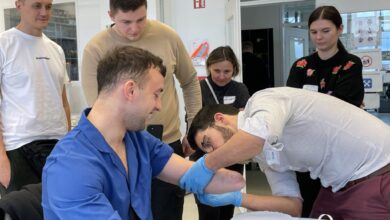

CANBERRA, Australia — A year of Covid-19 uncertainty has stopped many Australian people from job-hopping, while others have given up on finding a job because they can’t afford or access child care.
Australian Bureau of Statistics data on job mobility released on July 7 showed 975,000 or 7.5 percent of employed people changed jobs, the lowest annual job mobility rate on record. Some 1.8 million people left or lost a job in the year to February 2021.
Almost 140,000 have given up looking for work because they can’t get affordable child care, overwhelmingly women.
“This should not be a barrier to anyone entering the workforce,” trade union leader Michele O’Neil said. Michele O’Neil is an Australian trade unionist and president of the Australian Council of Trade Unions since 2018.
“It is critical that the federal government introduce free universal early childhood education and care.”

There were 2.2 million people who were not working but wanted to work, up from 2.1 million people a year earlier. Job hopping remained highest for professionals, with 21 percent managing to change jobs during the Covid-19 era.
“Job mobility in Australia has been generally trending down for decades and reached a new low during the first year of the pandemic,” Bjorn Jarvis, head labor statistician of the Australian Bureau of Statistics, said.
Around 82,000 fewer people changed jobs than in the year before. Jarvis said during the first year of the pandemic, people were more likely to change their industry than their occupation.
Workers were also more likely to change to a job with more hours than to a job with the same hours or fewer. It was harder for men to switch jobs, with mobility down from 8.4 percent to 7.5 percent, compared with women at 7.8 percent, up from 7.6 percent.
Borders are closed to foreign workers, leading to job shortages and more demand in some sectors.
The occupation group winning the largest increase was accommodation and food services, with mobility now 17.1 percent compared with 14.3 percent before the pandemic. Job mobility also increased for community and personal service workers, and was steady for clerical and administrative staff. Laborers were also more mobile.
But sales workers, and technicians and traders, were less able to job hop.

As per the reports, the unemployment rate in Australia increased by 1.8 percent between March 2020 and May 2020. The underemployment rate increased by 4.3 percent in the same period, whereas the participation rate decreased by 3.3 percent.
From May 2020 to October 2020, the unemployment rate decreased by 0.1 percent, the underemployment rate decreased by 2.7 percent and the participation rate increased by 3.2 percent.
(Edited by Vaibhav Pawar and Ritaban Misra)
The post 1.8 Million Left Or Lost Job In Covid-19 Year In Australia appeared first on Zenger News.





